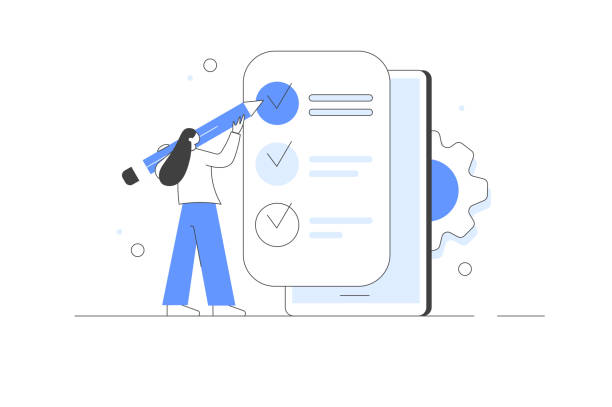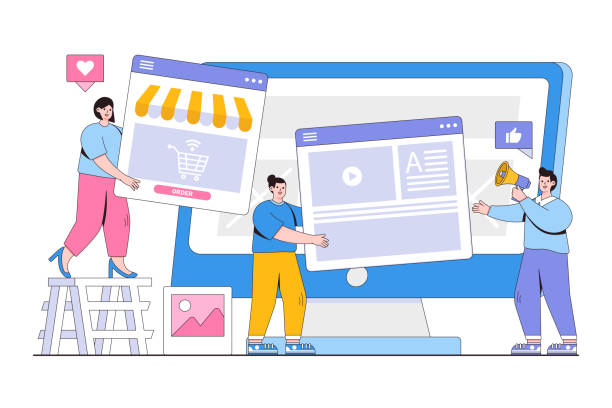Introduction to Fast Website Design: Why Speed Matters?
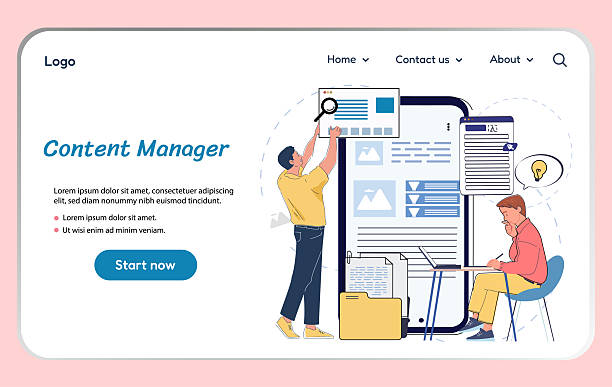
In today’s digital world, website loading speed is not just an advantage, but a critical necessity.
The concepts of #Website_Design #Web_Speed #User_Experience #SEO and how they impact your online success are explained in this section.
Fast website design goes beyond merely loading pages quickly; this approach means optimizing every component of the website so that users can access their desired content in the shortest possible time and have a smooth and pleasant experience.
This is especially important for e-commerce websites, news portals, personal blogs, and even corporate sites.
Slow websites can quickly lose visitors, as no one likes to wait for a web page to load.
Research shows that most web users expect a page to load in less than three seconds, and if this time takes longer, the probability of abandoning the site significantly increases.
This directly affects the Conversion Rate and Bounce Rate.
A slow website can lead to fewer sales, fewer subscribers, and ultimately, less revenue.
On the other hand, a fast website not only improves user experience but also plays a key role in search engine rankings.
Google and other search engines consider site speed as one of the important factors in their ranking algorithms.
Therefore, if you want to be seen in search results and attract organic traffic, fast website design should be your top priority.
This chapter serves as an explanatory and educational introduction to understanding the fundamental importance of speed in today’s web ecosystem.
Did you know that 94% of a first impression of a company is related to its website design?
RasaWeb, by providing professional corporate website design services, helps you create the best first impression.
✅ Create a professional and trustworthy image for your brand
✅ Easier attraction of potential customers and improvement of online presence
⚡ Get free consultation for corporate website design
Why Is Web Speed Crucial for Your Business?

Do you know how much every second of delay in loading your website can cost your business? This is a thought-provoking and analytical content piece that directly addresses the losses caused by slow websites.
Every second increase in page load time can lead to a significant decrease in conversion rates, reduced customer satisfaction, and damage to your brand’s reputation.
For online businesses, whose existence depends on a digital presence, web speed is not just a technical factor, but a critical business factor.
Today’s customers, especially in the era of high-speed internet and smartphones, have very little patience.
A frustrating experience caused by a slow site quickly drives users to competitors.
This not only means losing immediate sales but also losing long-term opportunities to build customer loyalty and positive word-of-mouth marketing.
From an operational perspective, slow websites can consume more server resources, leading to increased web hosting and server maintenance costs.
Furthermore, the psychological impact on internal teams is significant; frustration with website performance can reduce productivity and motivation.
Investing in fast website design is a direct investment in your business’s Return on Investment (ROI).
Improved speed means increased conversion rates, reduced bounce rates, improved SEO, and ultimately, sustainable revenue growth.
This analysis shows why every business, regardless of size and type of activity, should consider its website speed as a strategic priority.
Technical Components and Key Optimizations for Increasing Web Speed

To achieve fast website design, understanding technical components and applying specific optimizations is essential.
This section specifically addresses techniques that play a vital role in reducing website loading time.
One of the most important aspects is image optimization.
Large, high-quality images can put a significant burden on the server and user’s bandwidth.
Compressing images without a noticeable loss of quality, using next-generation formats like WebP, and implementing Lazy Loading (lazy loading) for off-screen images are effective solutions.
Next is code minification.
Removing blank spaces, comments, and extra characters from HTML, CSS, and JavaScript files can significantly reduce their size and, consequently, speed up loading time.
Using a Content Delivery Network (CDN) is also a powerful strategy.
A CDN stores your website’s content on various servers worldwide and selects the closest server to deliver content to the user, which reduces physical distance and significantly increases access speed.
Additionally, enabling Browser Caching allows browsers to store your website’s static files so that on subsequent visits, there is no need to re-download them, and pages load quickly.
Optimizing server response, choosing high-quality web hosting, and using GZIP compression for files are also critical factors.
By focusing on these technical aspects, significant strides can be made towards reducing site load time and providing an exceptional user experience.
| Optimization Factor | Description | Importance |
|---|---|---|
| Image Optimization | Compression, resizing, using next-gen formats (WebP). | Very High |
| Code Minification | Removing extra spaces, comments, and unnecessary characters from HTML, CSS, and JS. | High |
| Using CDN | Distributing content across global servers to reduce latency. | Very High |
| Browser Caching | Storing files in the user’s browser for subsequent visits. | Medium |
| Server Responsiveness | Choosing strong hosting and optimizing server settings. | Very High |
| GZIP Compression | Compressing text files before sending them to the browser. | High |
Advanced Tools and Technologies for Achieving High-Speed Websites
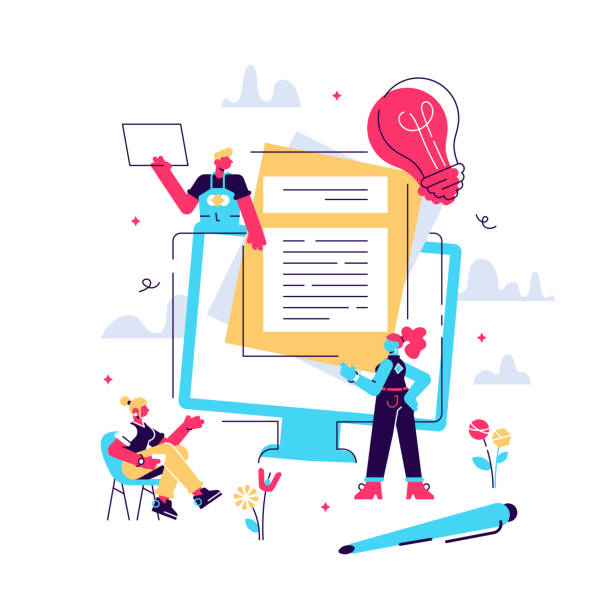
For anyone involved in fast website design, familiarity with current tools and technologies is essential.
This chapter serves as a comprehensive guide, introducing you to the most important speed measurement tools and technologies that help you build incredibly fast websites.
Among the prominent speed testing tools are Google PageSpeed Insights, GTmetrix, and Lighthouse.
These tools not only display your website’s speed score but also provide practical and precise recommendations for performance improvement; recommendations such as removing render-blocking resources, optimizing CSS and JavaScript, and ensuring Core Web Vitals are optimized.
Alongside measurement tools, new technologies have also emerged that make fast web design a reality.
Accelerated Mobile Pages (AMP) is an open-source project that helps build lightweight and extremely fast web pages for mobile devices.
Progressive Web Apps (PWAs) also combine the best features of web and mobile applications, providing a fast and reliable user experience even in poor network conditions.
Using the Lazy Loading technique for images and videos, leveraging optimized web fonts, and implementing Service Workers for offline caching are also among the solutions that help websites achieve maximum speed.
By correctly combining these tools and technologies, you can build websites that are not only visually appealing but also at the peak of performance, offering an unparalleled user experience.
This ultimately helps improve SEO and increase your business’s return.
Are you dissatisfied with your e-commerce site’s low sales?
RasaWeb is your solution for having a professional and high-selling e-commerce site.
✅ Significant increase in sales and revenue
✅ Easy and enjoyable shopping experience for customers
⚡ Get a free consultation from RasaWeb now!
The Impact of Site Speed on User Experience and Visitor Engagement

Website speed is not just a number in technical reports; it is directly related to your users’ emotions and behavior.
This section, in an engaging and analytical way, delves into the profound impact of load speed on user experience (UX) and how visitors interact with your content.
Imagine having to wait several minutes at a door every time you want to enter a building; this is precisely the feeling a slow website instills in users.
High speed conveys a sense of professionalism and respect for the user’s time.
When a website loads quickly, users are less likely to become frustrated and impatient, and more likely to explore other pages on the site.
This translates to an increased Dwell Time and a reduced Bounce Rate.
Fast website design allows users to navigate content seamlessly, fill out forms, view products, and make purchases.
This ease of navigation directly leads to increased conversion rates and ultimately, greater profitability.
On the other hand, slow websites can create a sense of distrust and insecurity in users.
If a website loads slowly, the user might assume that the website is technically weak or even unreliable.
This negative perception can easily lead to losing customers and damaging brand reputation.
Furthermore, speed also affects users’ ability to share content on social media.
A positive and smooth user experience encourages users to recommend your website to their friends and acquaintances.
Ultimately, investing in speed optimization means investing in customer satisfaction and building a loyal user base.
The Critical Role of Web Speed in Website Ranking and SEO
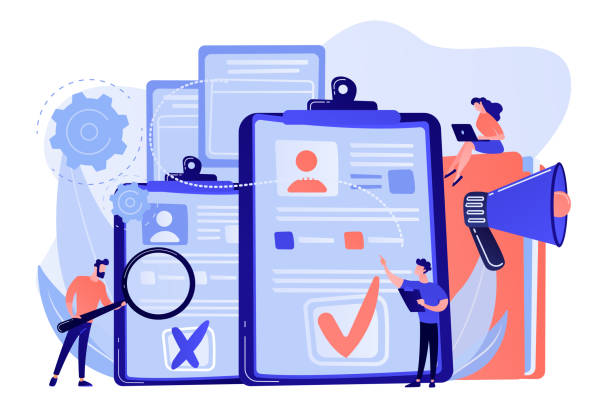
In the complex ecosystem of SEO (Search Engine Optimization), web speed is recognized as a key ranking factor and plays a vital role in your website’s visibility.
This section provides a comprehensive explanation of how fast website design impacts SEO performance and ranking in search engines, especially Google.
Since 2010, Google has explicitly stated that page load speed is one of its ranking algorithm factors.
Over time, this importance has grown, and with the introduction of Core Web Vitals in 2021, speed became a core pillar for page experience.
Core Web Vitals include three main metrics: LCP (Largest Contentful Paint), which measures the loading time of the largest content element; FID (First Input Delay), which indicates the site’s responsiveness to the user’s first interaction; and CLS (Cumulative Layout Shift), which examines the visual stability of the page.
Poor performance in any of these metrics can severely damage your website’s SEO ranking.
Search engines aim to provide the best possible experience to their users, and slow websites create an unfavorable user experience.
Therefore, if your site is slow, the likelihood of achieving higher rankings in search results decreases.
Speed optimization not only helps you meet Core Web Vitals standards but also improves search engine crawl rates.
Faster sites are easier and more efficient for Googlebots to index your content, which leads to quicker and better identification of your new or updated content.
Therefore, investing in site speed optimization is not just a measure to improve user experience, but also a smart strategy to strengthen SEO and increase visibility in search results.
Common Web Design Mistakes and Solutions to Avoid Them
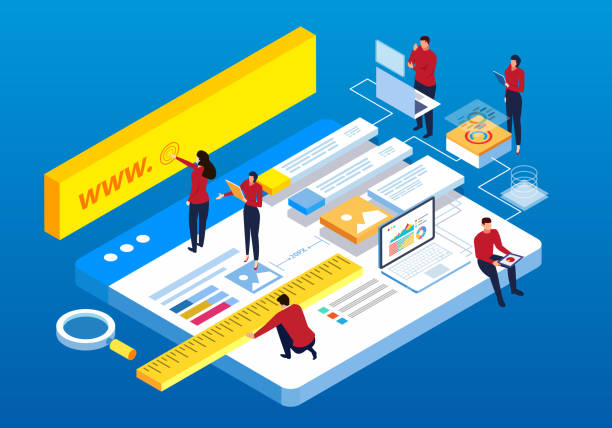
Even the best intentions in web design can reach a dead end due to common mistakes on the path to achieving fast website design.
This section provides a practical guide to identifying and avoiding the most common errors that reduce website speed.
One of the biggest mistakes is using unoptimized images.
Many web designers upload high-resolution and large-sized images without proper compression or resizing.
The solution is to always compress images before uploading and use modern formats like WebP.
Excessive use of web fonts, bulky JavaScript scripts, and additional plugins can also significantly reduce speed.
Every extra script or plugin imposes a new burden on the server and the user’s browser.
The solution is to use only essential plugins and scripts and optimize them.
Not using caching and CDN is another common mistake.
As mentioned earlier, caching and CDN can dramatically reduce load times.
Incorrect server configuration or choosing inappropriate and cheap hosting can also be a major speed bottleneck.
Ensure that your hosting service has sufficient capabilities and fast responsiveness.
Unoptimized databases for dynamic websites, such as WordPress, can also slow down performance.
Regular cleaning and optimization of the database are essential to maintain performance.
Finally, ignoring speed tests and user feedback is also a big mistake.
You should regularly use speed testing tools and listen to user feedback regarding site performance.
By being aware of these mistakes and implementing their solutions, you can take effective steps to improve your website’s performance and provide an excellent user experience.
| Common Mistake | Description | Solution |
|---|---|---|
| Unoptimized Images | Using high-volume images with unnecessary resolution. | Compress and resize images, use WebP. |
| Bulky JavaScript and CSS | Excessive and render-blocking code. | Minify code, defer and async JS. |
| Lack of Caching | Failure to utilize temporary data storage. | Enable browser caching and server-side caching. |
| Poor Hosting Choice | Web hosting with limited resources and slow responsiveness. | Choose quality hosting and optimized servers. |
| Excessive Plugins and Scripts | Installing too many unnecessary plugins and scripts. | Remove unnecessary plugins and optimize essential ones. |
| Not Using CDN | Serving content only from a central server. | Implement a Content Delivery Network (CDN). |
The Future of the Web Depends on Speed: Developments and New Trends

The world of the web is constantly evolving, and speed is always at the center of these changes.
This section, with a news-oriented approach, delves into new trends and forward-looking technologies that will play a pivotal role in shaping the next generation of fast website design.
One of the most important upcoming trends is the increased use of Serverless and Microservices architectures.
These approaches allow developers to independently develop and deploy different parts of a website, leading to better scalability and faster performance.
Also, HTTP/3, the next generation of the HTTP protocol, using the QUIC protocol, will significantly increase data transfer speed and security, paving the way for more responsive and faster websites.
Artificial Intelligence (AI) and Machine Learning (ML) are also playing an increasingly important role in web performance optimization.
AI algorithms can automatically optimize images, minify code, and even predict user behavior patterns for content prefetching.
Edge Computing, which processes data closer to the end-user instead of central servers, will also significantly help reduce latency and increase website responsiveness.
The emergence of Web3 and blockchain technologies may also introduce new models of content hosting that are inherently decentralized and therefore potentially faster.
These developments indicate that the focus on speed in the future of the web will not only not decrease but will become one of the most important pillars of innovation.
Businesses that embrace these trends and invest in new fast web design approaches will be leaders in the digital competition.
Are you worried that your company’s old website will drive away new customers? RasaWeb solves this problem with modern and efficient corporate website design.
✅ Increases your brand’s credibility.
✅ Helps attract targeted customers.
⚡ Contact RasaWeb for a free consultation!
Case Study of Fast Websites’ Success: Examining Real Examples

To better understand the real impact of fast website design, it is essential to look at real examples and case studies of businesses that have achieved significant success by optimizing their speed.
This section analytically explores several hypothetical but inspiring scenarios that demonstrate how speed can become a powerful competitive advantage.
Suppose a small online store was facing high bounce rates and low conversion rates.
After analyzing site speed with Google PageSpeed Insights, they realized that product images were unoptimized and the server had slow responsiveness.
By compressing images and migrating to a CDN, their homepage load time decreased from 5 seconds to less than 1.5 seconds.
The result? Their conversion rate increased by 15%, and the bounce rate decreased by up to 20%, which directly led to increased revenue.
In another case, a news blog with rich content but visitors dissatisfied with the site’s slowness decided to use AMP technology for their article pages.
This action resulted in their articles loading at incredible speed in mobile search results.
This change led to a 30% increase in organic mobile traffic and a 10% increase in user dwell time on the site, indicating greater content engagement.
Additionally, an online educational platform transformed its user experience by using Progressive Web Apps (PWAs).
This allowed users to access some content even offline and enabled initial page loads to happen quickly.
This change resulted in a 25% increase in course completion rates and an 18% increase in new user registrations.
These examples clearly show how a fast site is not just a technical advantage, but a powerful lever for business growth and success in today’s competitive environment.
Your Next Steps Towards Achieving Fast and Optimized Website Design
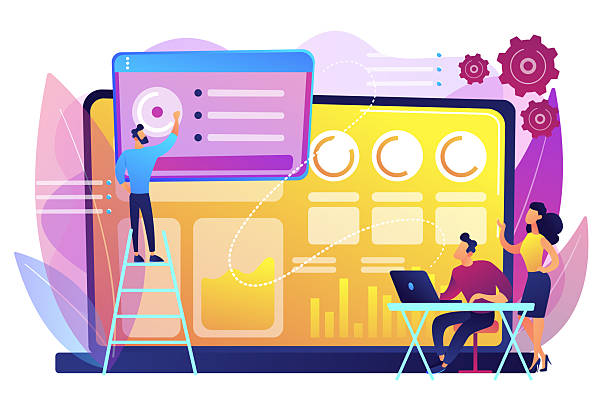
After familiarizing yourself with the importance, tools, and challenges of fast website design, it’s now time to take practical steps to improve your website’s speed.
This section provides a comprehensive guide, summarizing key steps and final recommendations for you.
The first step is to measure and analyze the current status.
Use tools like Google PageSpeed Insights, GTmetrix, or Lighthouse to determine your site’s current performance score and obtain a list of weaknesses and optimization recommendations.
Pay special attention to Core Web Vitals recommendations.
The second step is to optimize images and multimedia content.
Use image compression tools, save images with appropriate dimensions, and utilize Lazy Loading for images below the fold.
The third step is minifying and optimizing code (HTML, CSS, JavaScript).
Load CSS files at the beginning of the document and JS files at the end to prevent delayed page rendering.
Removing extra code and comments is also important at this stage.
The fourth step is using caching and CDN.
Enable browser caching to store static files in users’ browsers and use a CDN to distribute content worldwide.
The fifth step is optimizing the server and hosting.
Ensure that your hosting service is fast and reliable and that server settings are configured for optimal performance.
Finally, do not forget continuous monitoring and testing.
Site speed is not a one-time process; it requires continuous maintenance and optimization.
By following these steps, you can have a fast, optimized website with an excellent user experience that will significantly contribute to the growth and success of your online business.
Investing in high-speed website design is a strategic decision for your digital future.
Frequently Asked Questions
| No. | Question | Answer |
|---|---|---|
| 1 | What is the concept of “Fast Website Design”? | Designing a website that loads in the shortest possible time and provides a smooth user experience, with an emphasis on performance optimization. |
| 2 | Why is website load speed important for users? | Today’s users have little patience; slow sites lead to early page abandonment, an undesirable user experience, and loss of visitors. |
| 3 | How does fast website design affect SEO? | Search engines like Google consider site speed a ranking factor. Faster sites achieve better rankings in search results. |
| 4 | What are the main factors affecting site speed? | Image optimization, caching, CSS and JS file compression, using strong hosting, reducing HTTP requests, and optimized coding. |
| 5 | How can website load speed be measured? | Using tools like Google PageSpeed Insights, GTmetrix, Lighthouse, and Pingdom Tools, which provide detailed reports on site performance. |
| 6 | What is the role of images in site speed and how should they be optimized? | High-volume images can significantly reduce site speed. They should be compressed, modern formats (like WebP) should be used, and Lazy Load technique should be implemented. |
| 7 | What is the importance of choosing appropriate hosting in fast website design? | A powerful and high-speed hosting (preferably SSD) with optimized servers close to target users is the foundation of a site’s speed. |
| 8 | How does Caching help increase site speed? | Caching allows the user’s browser to store copies of site files, so on subsequent visits, there is no need to reload all content, and the site displays faster. |
| 9 | Is using a CDN (Content Delivery Network) recommended in fast website design? | Yes, CDN significantly increases load speed by storing copies of site content on various geographical servers and delivering it from the closest server to the user. |
| 10 | What are the key tips for developers to design a high-speed website? | Writing clean and optimized code, minimal use of plugins, optimizing database queries, using lightweight frameworks, and implementing Lazy Load for content. |
And other services by RasaWeb Advertising Agency in the field of advertising:
Smart UI/UX: An effective tool for improving SEO ranking with the help of real data.
Smart Website Development: An effective tool for analyzing customer behavior with the help of Google Ads management.
Smart Social Media: Designed for businesses seeking online growth through SEO-driven content strategy.
Smart Google Ads: A professional solution for improving SEO ranking with a focus on optimizing key pages.
Smart Marketplace: An effective tool for improving SEO ranking with the help of optimizing key pages.
And over hundreds of other services in the field of internet advertising, advertising consultancy, and organizational solutions.
Internet Advertising | Advertising Strategy | Advertorial
Resources
Comprehensive Guide to Increasing Site Speed
Key Tips for Web Performance Optimization
Image Optimization for More Speed
The Role of CDN in Improving Website Speed
? RasaWeb Afarin Digital Marketing Agency is your reliable partner on the path to digital growth and achieving your business goals. From custom website design to SEO optimization and managing advertising campaigns, we are by your side to ensure a powerful online presence.
📍 Tehran, Mirdamad Street, next to Bank Markazi, Kazeroun Jonoubi Alley, Ramin Alley, Plaque 6


